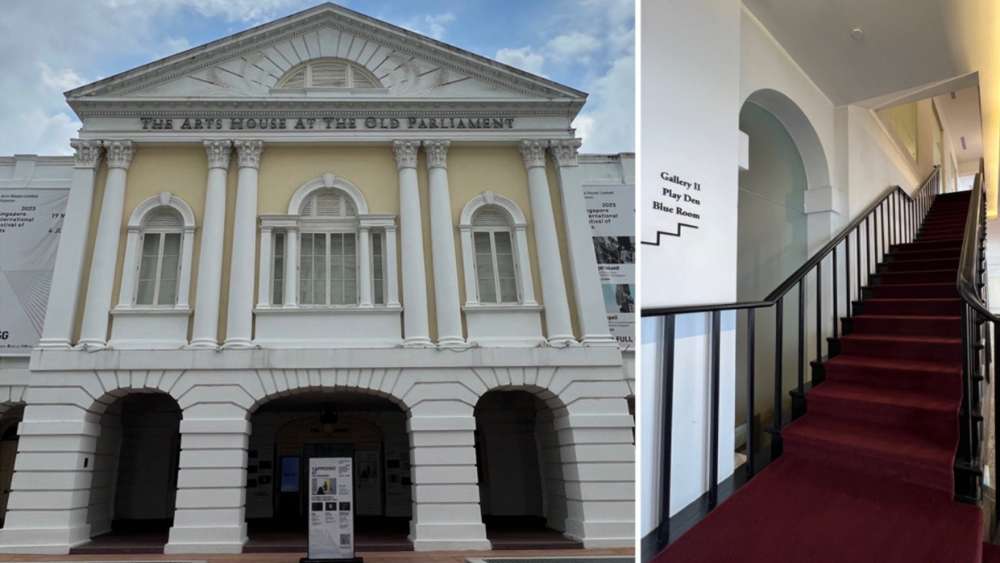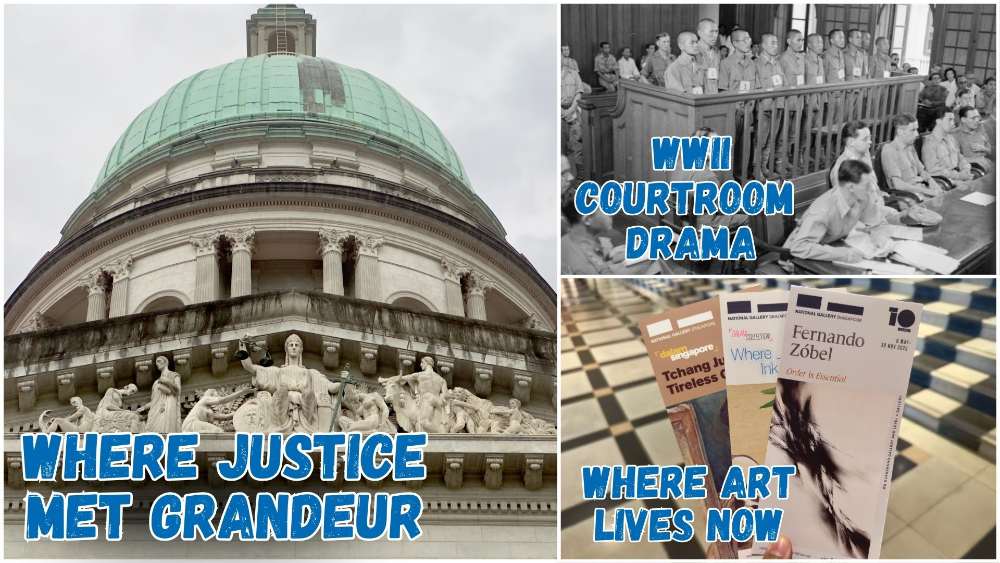National Monuments Of Singapore: The Arts House
What is a National Monument? Who gazettes them? How many national monuments are there in Singapore? To date, the Preservation of Sites and Monuments, a division of National Heritage Board, has identified and gazetted 75 buildings, structures and sites of national significance as an integral part of Singapore’s built heritage.
And we're here to tell you all about them - one National Monument at a time!
You've probably passed by or stepped into more than a few of them without realising they were National Monuments: Al-Abrar Mosque, Asian Civilisations Museum, the Civilian War Memorial, Saint Andrew's Cathedral, the Esplanade Park Memorials, Fort Siloso on Sentosa - no need to plan an itinerary for friends visiting from overseas; just show them this article ✌️
In this edition, we zoom in on what is probably the oldest building in Singapore: The Arts House (formerly Old Parliament House and Annex Building).
📍 Location
The Arts House was the 27th building to be gazetted as a National Monument, and is located near other National Monuments such as Victoria Theatre and Victoria Concert Hall, and Asian Civilisations Museum (ACM). The nearest MRT stations are City Hall or Raffles Place.
📅 Significant dates
Dates built:
- 1826-1827: Old Parliament House
- 1839: Annex Building
Milestones:
- 1827: Old Parliament House
- 1839: Annex Building
Dates gazetted:
- 14 Feb 1992: Old Parliament House
- 26 Jun 1992: Annex Building
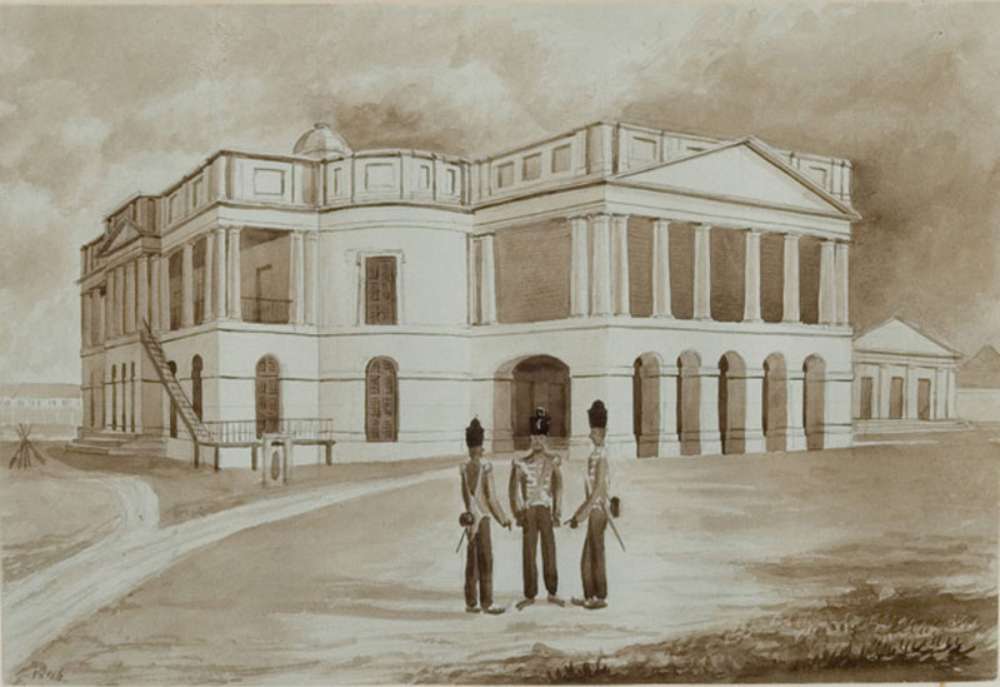 A sketch by John Turnbull Thomson of the original building in 1846, then known as the Public Offices of the Settlement. | IMAGE: WIKIMEDIA COMMONS/@OTAGO UNIVERSITY RESEARCH HERITAGE
A sketch by John Turnbull Thomson of the original building in 1846, then known as the Public Offices of the Settlement. | IMAGE: WIKIMEDIA COMMONS/@OTAGO UNIVERSITY RESEARCH HERITAGE
📜 History
Built between 1826 and 1827, the Old Parliament House was initially designed by colonial architect George D. Coleman – who also designed the first Saint Andrew’s Church and the Armenian Church – as a residence for Scottish merchant John Argyle Maxwell. However, it was never used as a home, as the land had been designated for public and administrative purposes in Sir Stamford Raffles’ 1822 Town Plan
As Maxwell was already constructing another residence, he agreed to lease the building to the British Administration as a Recorder’s Chamber and courthouse for 500 rupees per month (equivalent to around US$15,200 today 😨).
On 1 Sep 1829, the property was sold to George Gerald Larpent and John Cockrell. In 1839, a single-storey extension was added to serve as a new courthouse, while the front section housed public offices. Two years later, in 1841, the British East India Company acquired the building.
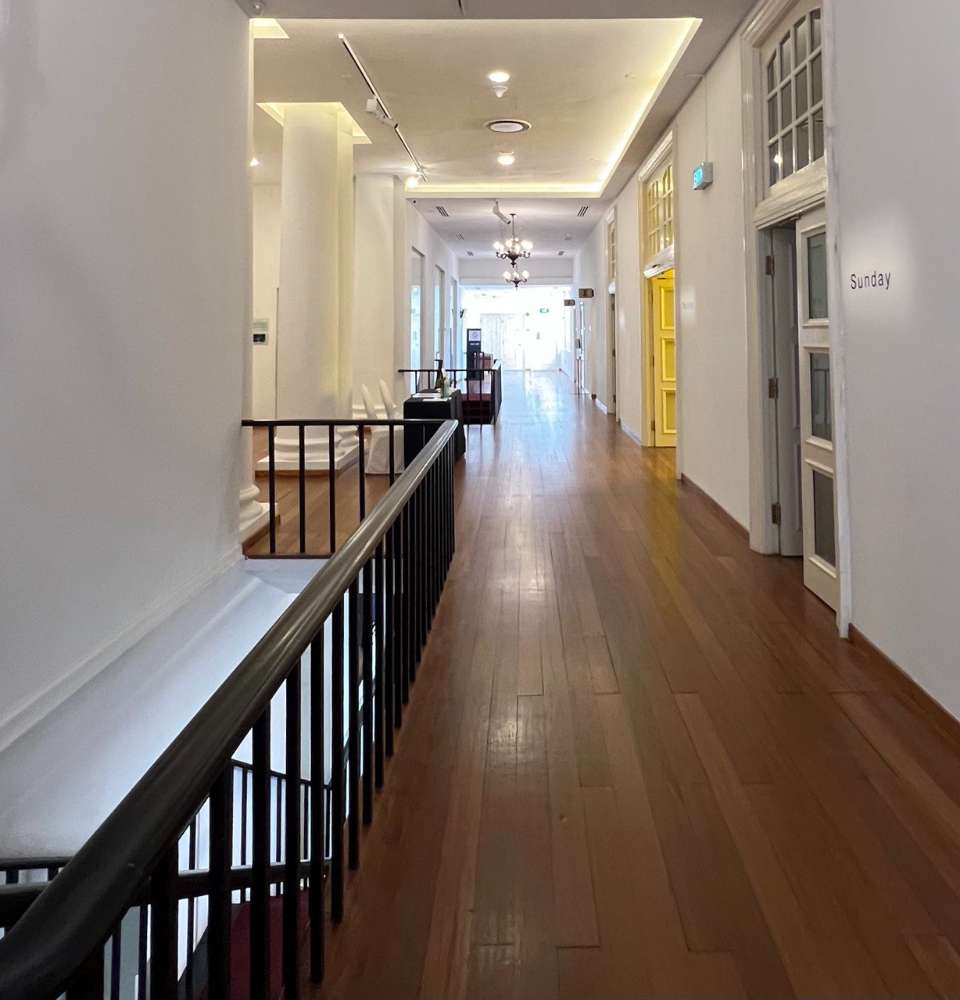 IMAGE: NG KAI
IMAGE: NG KAI
Further modifications were carried out in 1875, including a long extension along the Singapore River by colonial architect J. F. A. McNair – who was also responsible for the design of the ACM and Saint Andrew’s Cathedral. The main building functioned as the Supreme Court until 1939, when a new Supreme Court building was complete.
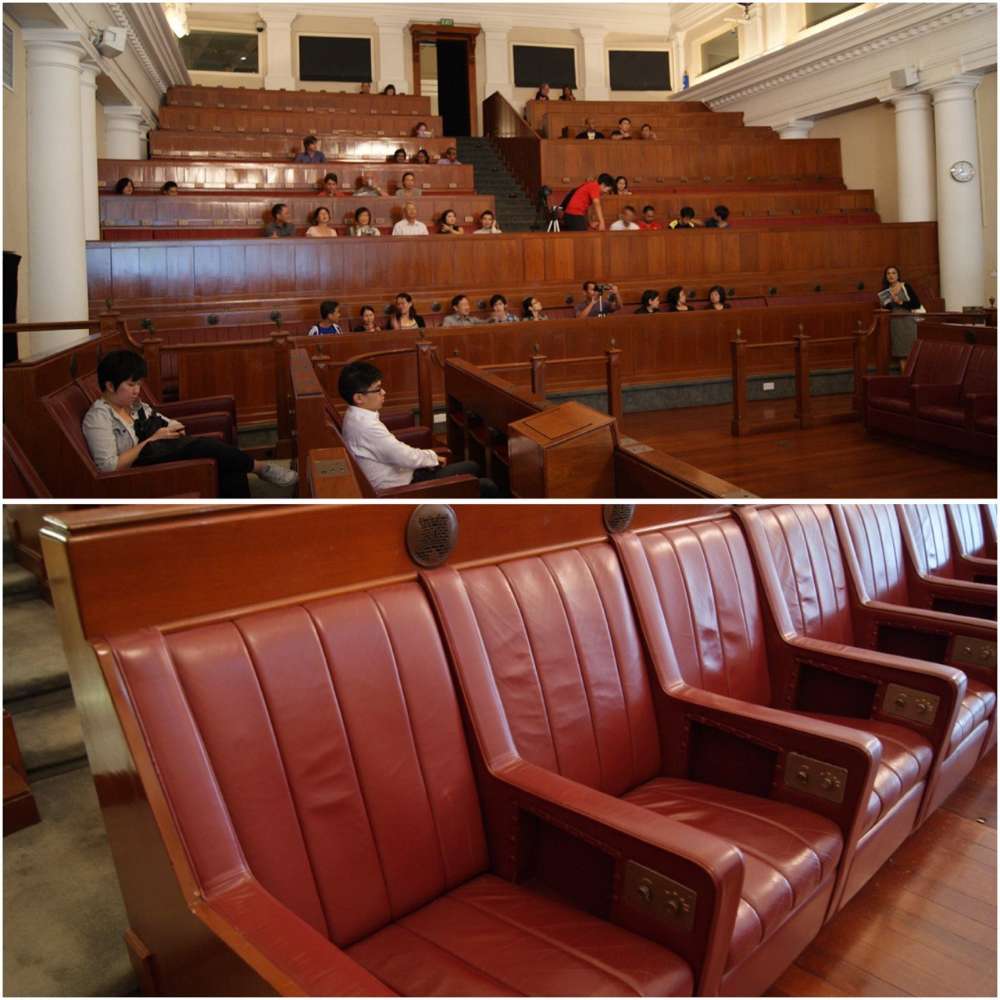 IMAGES: WIKIMEDIA COMMONS/@SMUCONLAW
IMAGES: WIKIMEDIA COMMONS/@SMUCONLAW
Following Singapore’s independence in 1965, the building was renamed Parliament House and served as the seat of Parliament until 1999. When the new Parliament House at 1 Parliament Place was officially opened on 4 Oct 1999, Coleman’s structure was renamed the Old Parliament House.
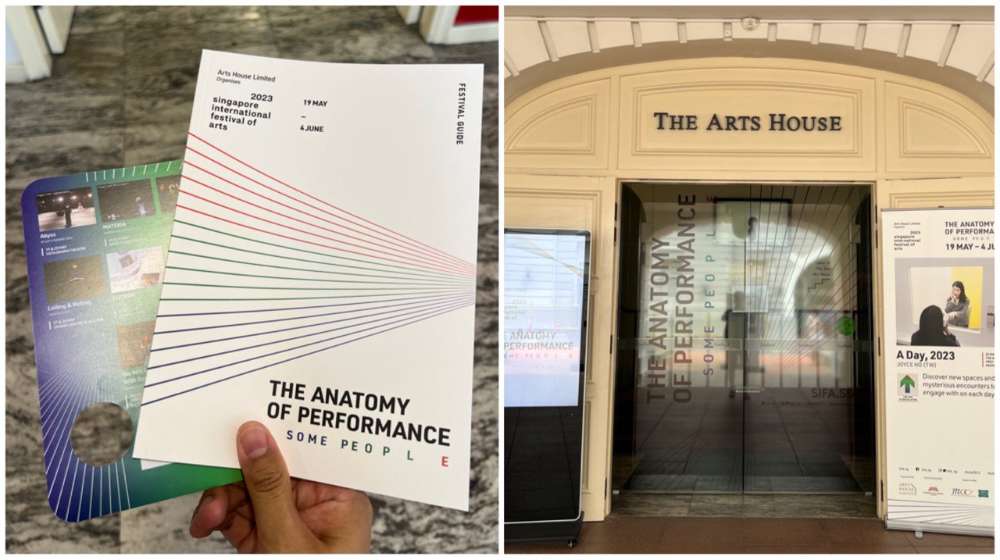 IMAGES: NG KAI
IMAGES: NG KAI
On 26 Mar 2004, the Old Parliament House was reopened as The Arts House, a venue dedicated to performing and visual arts. The renovations transformed the space into a cultural hub, incorporating entertainment areas and a 75-seat film theatrette. The former courthouse annex was also refurbished and now houses a restaurant.
For its sensitive restoration while preserving the building’s historic character, the Old Parliament House received an award in the Urban Redevelopment Authority’s Architectural Heritage Awards 2004.
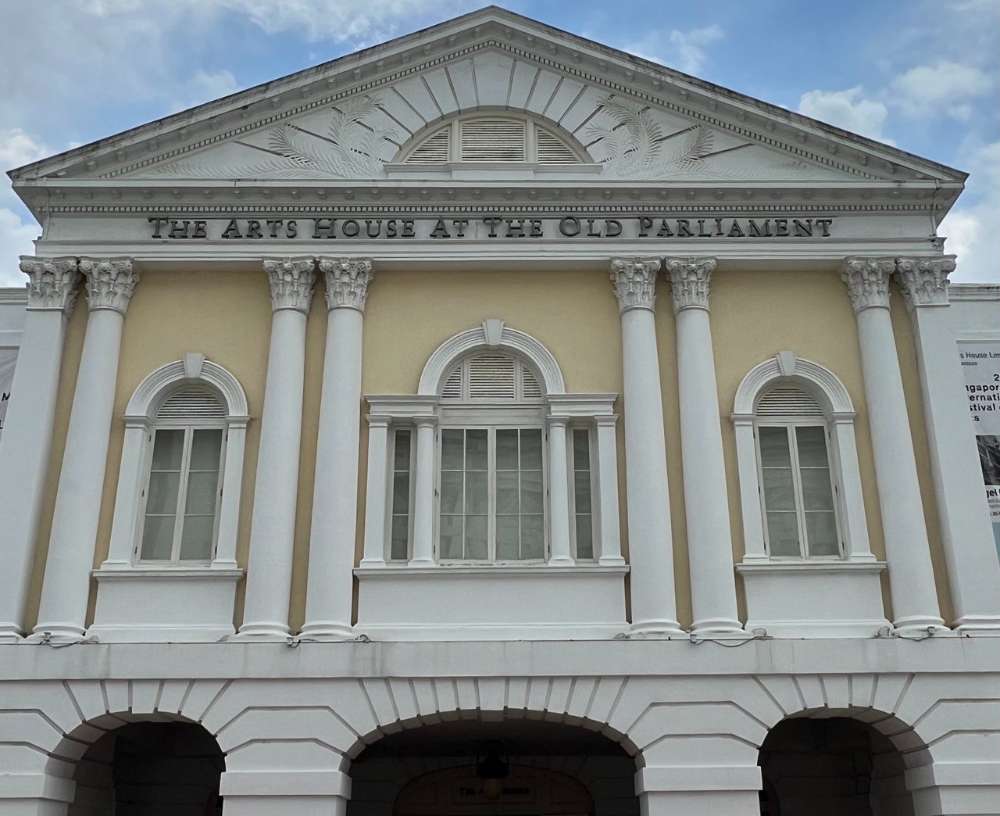 IMAGE: NG KAI
IMAGE: NG KAI
📐 Design and architecture
Over the years, successive renovations have altered Coleman’s original Neo-Palladian design of Maxwell’s House, resulting in a structure that is now predominantly Neoclassical in style. The building features triangular pediments (the upper part of the front of a building) and Corinthian pilasters (rectangular columns) on its façade.
Despite these changes, a Palladian window – comprising a large central arched opening flanked by two rectangular sections – remains on the front façade, offering a glimpse of its earlier design. Before air-conditioning became commonplace, loggias (partially open galleries) helped shield the interior from the tropical heat, while numerous windows ensured ventilation.
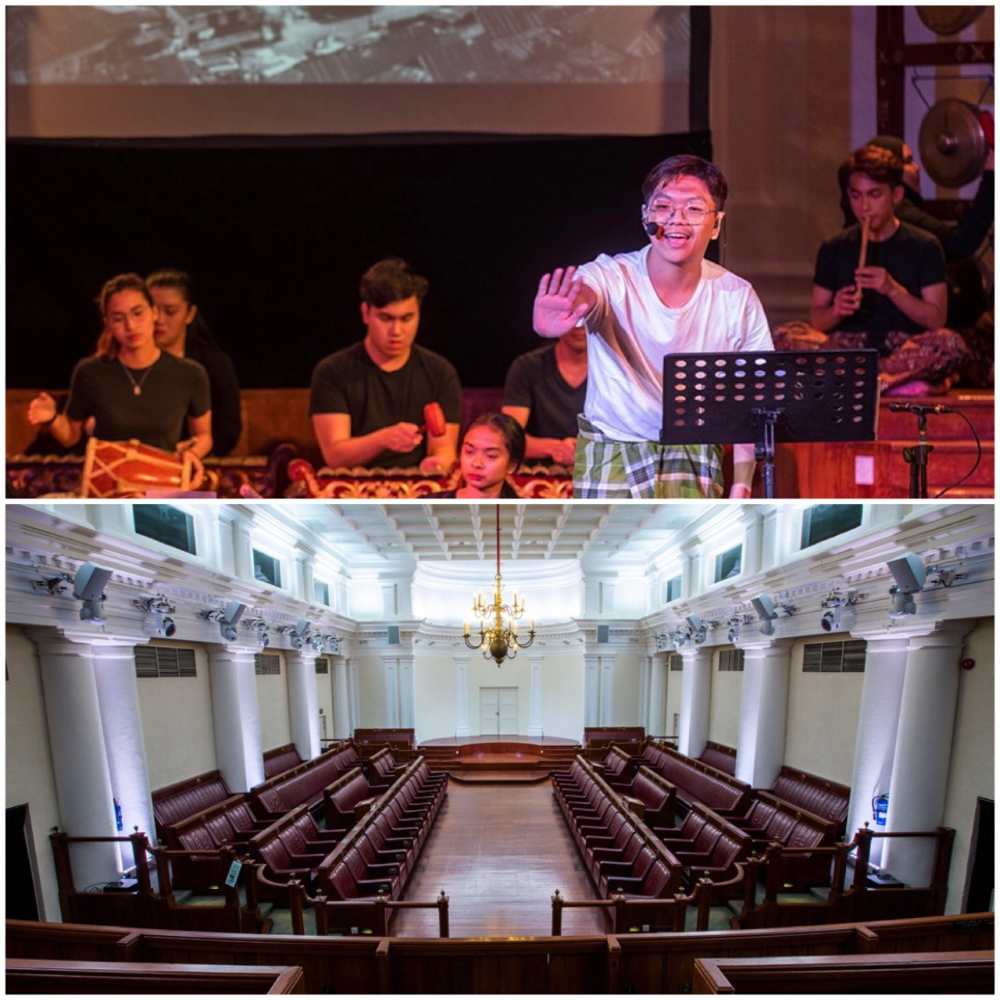 IMAGES: THE ARTS HOUSE
IMAGES: THE ARTS HOUSE
Within the Old Parliamentary Chamber, where parliamentary sessions once took place, a high coffered ceiling lends an air of grandeur. The walls are lined with Tuscan pilasters, while dentil (one of a number of small, rectangular blocks resembling teeth) mouldings embellish the cornices (an ornamental moulding around the wall of a room just below the ceiling).
The original parliamentary seats remain, and some still bear the castle motif from the coat of arms used during Singapore’s time as a Crown Colony.
Today, the Chamber can accommodate up to 200 guests and serves as a venue for a variety of events, including recitals, performances, conferences, fashion shows, and even weddings.
🕖 Opening hours
10am to 9pm daily.
🎟️ Admission
Entry to the building itself is free. For ticketed events and more info, click here.
For the latest updates on Wonderwall.sg, be sure to follow us on TikTok, Telegram, Instagram, and Facebook. If you have a story idea for us, email us at [email protected].







